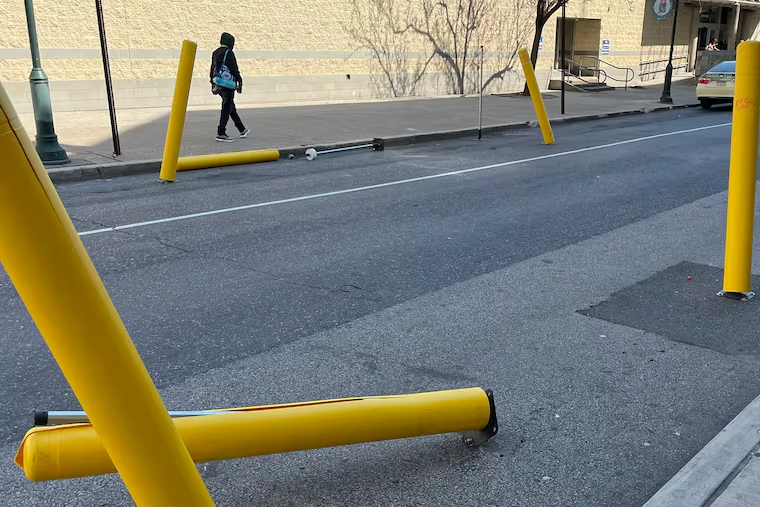Philly must get serious to prevent traffic deaths | Editorial
Despite taking a Vision Zero pledge to reduce traffic deaths to zero by 2030, more than 120 people died on city streets last year as Philadelphia is slow to implement safety measures.

In a blink of an eye, Liz Robinson’s life was upended. Despite being an experienced cyclist and careful rider, she was struck by a hit-and-run driver near the Wissahickon Transportation Center in 2017. She woke up days later with 20 broken bones and a punctured lung. She felt lucky to be alive, she said, even as she faced years of rehabilitation.
Last year, more than 120 Philadelphians weren’t as fortunate. Their lives were cut short by traffic fatalities, the indirect result of the city’s lethargic pace in implementing measures that can keep people safe.
While Robinson was able to sue the driver who hit her to recoup her medical expenses, a record number of hit-and-runs in 2022 have left many to deal with the costs alone. Police say they take 40 calls about hit-and-runs a day, an unsustainable pace for a stretched department.
» READ MORE: Families grieve as hit-and-run deaths reach a record in Philadelphia
Of course, as with many other civic maladies, some things are outside of city control. Philadelphia officials didn’t ask car manufacturers to start designing bigger and bulkier vehicles that make pedestrians harder to see, especially while turning. They also couldn’t have predicted that some American motorists would react to the coronavirus pandemic by driving more recklessly. They don’t force drivers to flee the scene after hitting someone with their car.
And it’s not just a problem here. At the national level, these trends led to the highest death toll for pedestrians in 40 years, despite Americans doing less walking than ever before.
Still, Philadelphia deserves some criticism due to its slow response to the ongoing threat from hit-and-runs, especially given its Vision Zero pledge to reduce traffic deaths to zero by 2030. Some places have managed to achieve Vision Zero’s goal despite these significant headwinds.
Jersey City, N.J., a city of nearly 300,000, managed to eliminate traffic deaths on city-controlled streets by utilizing a proactive, innovative approach.
Compare and contrast: While Philadelphia has dawdled in installing promised neighborhood slow zones, Jersey City has been quick. Mayor Jim Kenney has paid lip service to Vision Zero without spending any political capital on the effort; Jersey City Mayor Steve Fulop has become the face of his city’s program. Philadelphia officials were quick to roll back open space programs deployed during the pandemic; Jersey City officials sought to make them permanent. Redesigning roads for slower and safer speeds can be a 10-year saga in Philadelphia; Jersey City wins residents over with pilot projects and deploys interventions quickly.
Like the classic Nike slogan, Jersey City’s approach has been “just do it.” Philadelphia seems to prefer “just talk about it.” That’s not good enough when the cost is in lives.
» READ MORE: Police identify man killed in hit-and-run spree; suspect remains at large
While slowing down might be frustrating for speedsters, it is the most effective way to ensure safety for the city’s pedestrians, cyclists, and yes, motorists, too. As humans have known since the days of Isaac Newton, force equals mass times acceleration. This makes impact speed one of the biggest factors in determining whether a crash becomes fatal.
Philadelphia already knows how to cut the death toll. The city’s speed camera program on Roosevelt Boulevard has significantly reduced crashes in the area. These cameras should be extended to more of the city’s high-speed hot spots. The city should also adopt some of Jersey City’s nimbler approaches to street safety and slowing traffic near dangerous areas.
Philadelphians should be able to drive a car, ride a bike, or take a walk without wondering if they’ll make it back home.